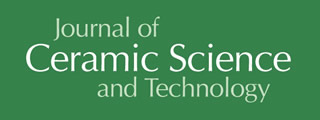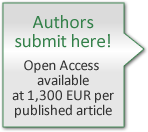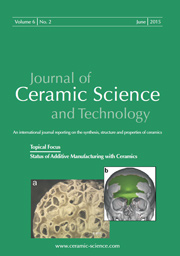Articles
All articles | Recent articles
Effect of Temperature Path on the Poling of Commercial Hard PZT Ceramics and its Implication for Mass Production
S. Esslinger, P. Neumeister, A. Schönecker
Fraunhofer Institute for Ceramic Technologies and Systems IKTS, Winterbergstr. 28, 01277 Dresden, Germany
received July 19, 2013, received in revised form August 27, 2013, accepted October 18, 2013
Vol. 4, No. 4, Pages 213-216 DOI: 10.4416/JCST2013-00018
Abstract
In order to identify process parameters for the efficient poling of hard piezoelectrics in mass production, the effect of temperature modification during poling is investigated for a commercial hard PZT in the temperature range from 25 °C to 150 °C. While an electric field is applied, the temperature of the specimens was kept constant or the specimens were heated or cooled. The resulting piezoelectric performance was evaluated on the basis of the planar coupling factor at room temperature. An optimal poling temperature associated with maximum piezoelectric performance was found for poling with constant temperature. However, for poling while cooling, even higher performance is attained if the starting temperature is high enough. If poling becomes necessary after fabrication at high temperature, the cooling period could be exploited. The observed correlation between permittivity and the coupling factor could be exploited in quality control.
![]() Download Full Article (PDF)
Download Full Article (PDF)
Keywords
Piezoceramic, hard PZT, polarization, serial production
References
1 Hohlfeld, K., Gebhardt, S., Schönecker, A., Michaelis, A.: Piezoceramic fibers and pearls derived by the polysulfone spinning process. In: Proceedings electroceramics for end-users VII Conference, France, 2013, in press.
2 Hufenbach, W., Gude, M., Heber, T.: Development of novel piezoceramic modules for adaptive thermoplastic composite structures capable for series production, Sensor Actuat. A-Phys, 156, 2 – 7, (2009).
3 Hufenbach, W., Modler, N., Winkler, A.: Sensitivity analysis for the manufacturing of thermoplastic e-preforms for active textile reinforced thermoplastic composites, Procedia Materials Science, 2, 1 – 9, (2013).
4 Rübner, M., Günzl, M., Körner, C., Singer, R.: Aluminium-aluminium compound fabrication by high pressure die casting, Mat. Sci. Eng. A-Struct., 528, 7024 – 7029, (2011).
5 Flössel, M., Gebhardt, S., Schönecker, A., Michaelis, A.: Development of a novel sensor-actuator-module with ceramic multilayer technology, J. Ceram. Sci. Tech., 1, 55 – 58, (2010).
6 Sobocinski, M., Zwierz, R., Juuti, J., Jantunen, H., Golonka, L.: Electrical and electromechanical characteristics of LTCC embedded piezoelectric bulk actuators, Adv. Appl. Ceram., 109, 135 – 138, (2010).
7 Schönecker, A.: Piezoelectric multi-material-systems and structures – design, technology and future perspective. In: Proc. 2012 IEEE International Ultrasonics Symposium., Germany, 2122 – 2128, (2012).
8 Heilig, C.: Transient processes in piezoelectric ceramics for actuator applications (in German), VDI-Verl. Düsseldorf, 2001.
9 Schönecker, A., Nicolai, M., Schlenkrich, F., Henschke, T., Uhlig, S.: Investigation of domain switching of PZT and KNN-based ceramics. In: Applications of ferroelectrics (ISAF/PFM), 2011 International Symposium on Piezoresponse Force Microscopy and Nanoscale Phenomena, Vancouver, 1 – 4, (2011).
10 Hooker, M.W.: Properties of PZT-based piezoelectric ceramics between -150 and 250 °C. NASA/CR-1998 – 208708.
11 Physik Instrumente (PI) GmbH & Co. KG: Piezoelectric ceramic products – fundamentals, characteristics and applications, CAT125E Piezoelectric Ceramic Products 11/04/15.0,25, 2011.
Copyright
Göller Verlag GmbH


